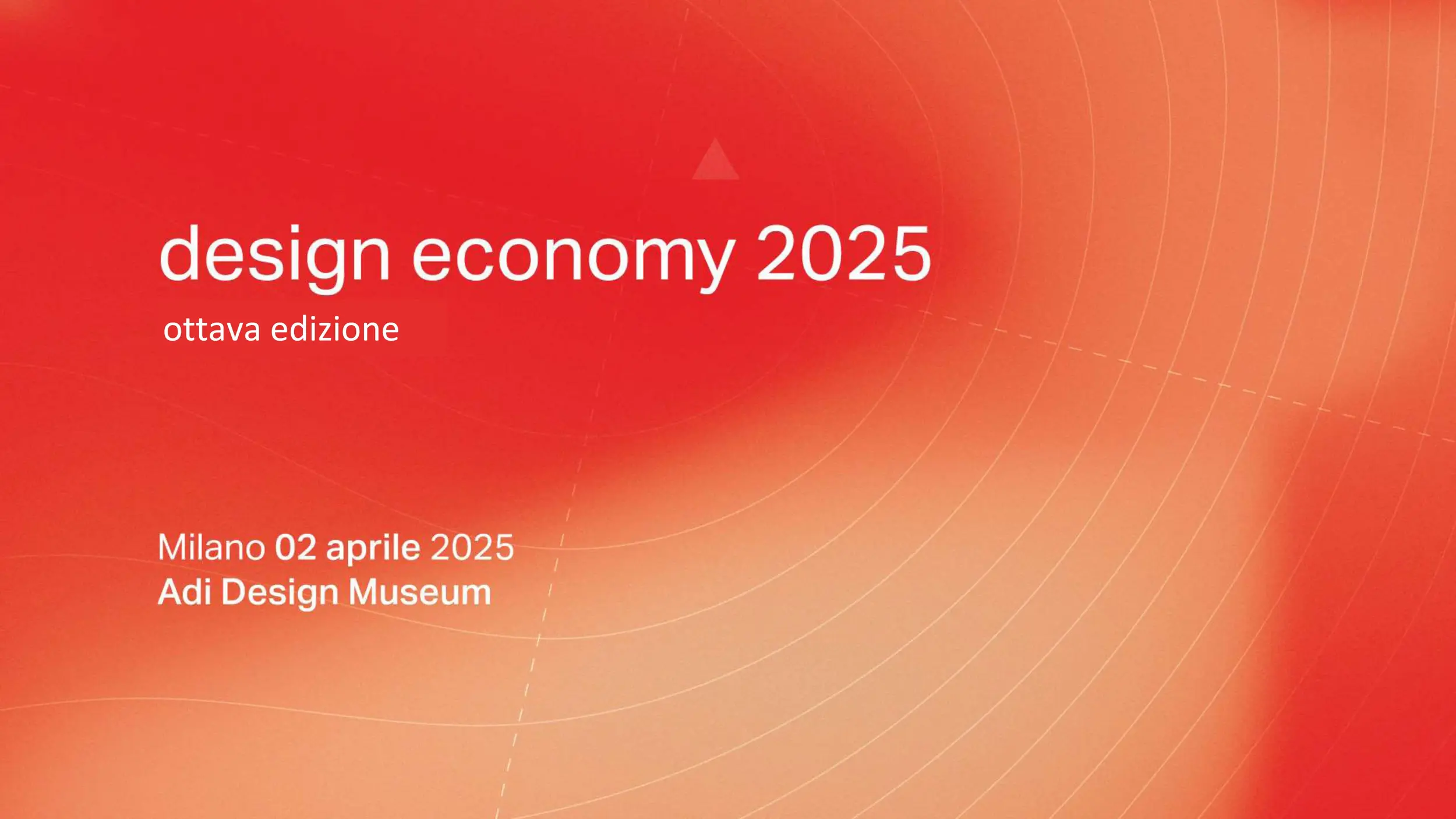
- 04/04/2025
- Economy, News and Fairs
Italian design confirms itself as a strategic asset for our economy, contributing to innovation, productivity and competitiveness, once again leading Europe in terms of turnover and number of employees.
This is the picture of the state of design in Italy that emerges from the “Design Economy 2025” report prepared by Fondazione Symbola, Deloitte Private, POLI.design and ADI Associazione per il Disegno Industriale and presented on April 2 at the ADI Design Museum in Milan.
The “Design Economy 2025” report, now in its eighth edition, analyzes the role of design in business, society and public policy, with the aim of raising awareness of its value for the competitiveness of the national production system.

The design sector in Italy
The design sector in Italy has 46 thousand operators including companies, freelancers and the self-employed that generated an added value of 3.2 billion (+4%) with 63,485 thousand employed (+0.3%). According to estimates conducted at the territorial level, a strong concentration of design activities are, once again, in Lombardy and, more specifically, in the province of Milan. In the Lombard territory, in fact, there are about 14,000 companies related to the design industry (about one-third of the total) from which 32.8 percent of the added value and 27.5 percent of the total employment in the sector comes. This is followed by Veneto and Emilia-Romagna. The capital of Italian design is always Milan, capable of concentrating 18.6 percent of the sector's added value on the national territory equal to 604 million generated.

Italy first in Europe for turnover
At the European level, Italian design is still the leader in terms of turnover (19.8% of the EU total, 6.3 billion euros) and number of employees (19.8%), ahead of Germany (18.9% of turnover at 6 billion and 15.1% of employees) and France (12.8% of turnover at 4.1 billion and 15.6% of employees). However, while France experienced remarkable employment growth (+24.2%) and Germany saw an expansion in turnover (+15.4%), Italy slowed down compared to previous years, growing only +4.6% in turnover and +5.2% in employment, just below the EU average (+5.5% and +5.4%). In terms of the number of firms, Italy is second in Europe with 16.4 percent, behind France (21 percent), but has contracted (-1.9 percent), while Germany and France are growing (+3.2 percent and +5.7 percent). Despite leading in absolute value, Italy is surpassed in efficiency by Spain, which has the highest average turnover per employee in Europe (148,645 euros), well above the EU average (90,355 euros) and the Italian average (90,658 euros).

Artificial intelligence, accelerator for innovation
Design and innovation are deeply connected: while innovation makes design methodologies its own to take shape, design continually refers to innovation to increase the competitiveness of its solutions. Among the levers for stimulating innovation, the introduction of new technologies, starting with artificial intelligence, emerges as a powerful accelerator.
The integration of artificial intelligence in the industry is booming throughout Europe: in Italy, 80 percent of design companies use it, with a peak of 88.9 percent among enterprises, but Germany and France are investing at a higher rate. To maintain this lead, Italy will have to focus on innovation and dimensional growth of companies.

Creativity and innovation of made in Italy design
As Ermete Realacci, president of the Symbola Foundation, pointed out, "Italy's leadership in design confirms its important role as the intangible infrastructure of made-in-Italy, as demonstrated by the Salone del Mobile in Milan, and a protagonist in the challenge of sustainability. In the midst of a green and digital transition, design is again called upon to give shape, meaning and beauty to the future. Design is also strategic for developing a new generation of products that in the name of beauty respond to the dictates of the circular economy: efficiency, lower use of materials and energy, recyclability, reusability. This is also why 91.7 percent say they are attentive to sustainability issues."
Ernesto Lanzillo, partner and leader of Deloitte Private in Italy, added that in addition to the micro/small size aspect of the operators, our country stands out for the creativity and innovation capacity of Made in Italy design, essential factors for the current and future competitiveness of all industries. “Especially in an era of radical transformations such as this,” he concluded, "design can act as a bridge between technology, products and services, but also between sustainability, health and people's well-being.
“The report clearly photographs the growing role of our sector in the Italian economy,” said Luciano Galimberti, president of ADI, "and the centrality of design as an engine of innovation. Milan is confirmed as the international capital of design, but it is the entire country system that shows widespread vitality, with new skills, new training models and an increasingly advanced use of technologies such as artificial intelligence."


 en
en  Italian
Italian French
French German
German Spanish
Spanish Portuguese
Portuguese








